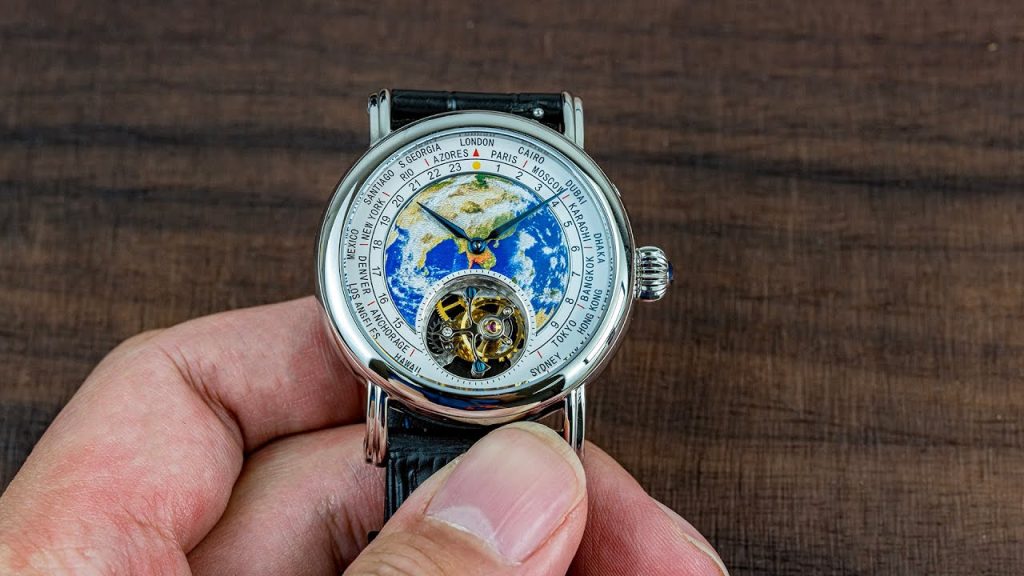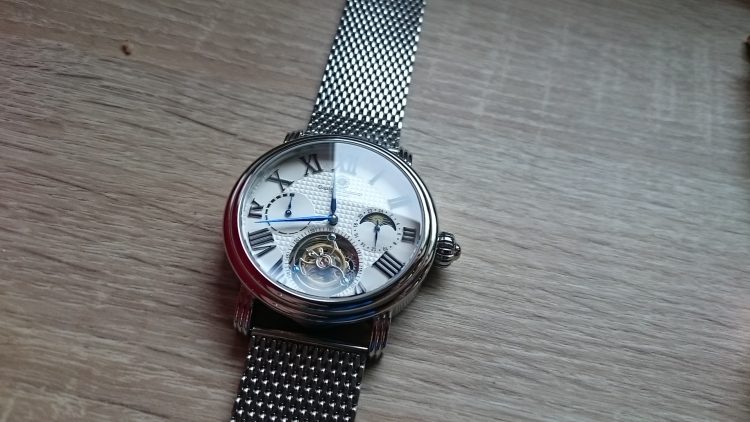Blind Test Design: 10 Criteria with All Branding Removed
In a world where prestige and perception often overshadow performance, few expected that a $500 Chinese-made tourbillon could hold its own—let alone outperform—renowned Swiss timepieces. But that’s exactly what happened in a 2025 horology experiment that left collectors, experts, and even industry insiders stunned. The test was brutally simple and methodically fair: strip away all logos, trademarks, engravings, and origin stamps from a range of tourbillon watches across various price tiers, then evaluate them solely on merit.
Ten watches were selected for the blind test, ranging from a $500 Seagull ST80-equipped model to high-end Swiss pieces retailing upwards of $50,000. All branding identifiers were removed and the watches were presented in identical sterile cases, fitted with neutral dials and uniform straps. Judges included independent watchmakers, chronometry experts, auction house specialists, and veteran collectors. Over the course of four days, these experts rated the watches based on ten indicators:
- Tourbillon Fluidity – How smooth and consistent was the tourbillon’s motion?
- Finish Under Magnification – Inspection under 10x loupe for polishing, anglage, and bevels.
- Chronometric Stability – Observed performance using timing machines over 72 hours.
- Power Reserve Accuracy – Does the reserve match the stated spec?
- Casing Precision – Quality of machining, fitment, and tolerances.
- Winding Feedback – Subjective feel of the winding mechanism.
- Rotor Noise and Balance (if automatic) – Silent, centered oscillation.
- Material Consistency – Grade of visible steel or titanium.
- Crown Feel and Responsiveness – Resistance, click precision.
- Overall Aesthetic Balance – Dial layout, tourbillon aperture symmetry.
The shocker? A Chinese-made Seagull tourbillon watch placed second overall—edging out models from long-established Swiss brands. Even more surprising was that it received the highest score in three categories: tourbillon fluidity, winding feedback, and chronometric stability. Judges were unaware of the origins of each watch until results were finalized. When the covers were lifted, there was a stunned silence, followed by uncomfortable chuckles and visible disbelief.
One of the participants, a Swiss master watchmaker with 40 years of experience, muttered, “It’s like being told your Michelin-starred meal came from a food truck.” But that was the point. The test wasn’t about names. It was about performance. And performance, it turned out, isn’t always draped in heritage.
Technical Breakdown: The Reverse Engineering of the Seagull ST80
How did a $500 tourbillon manage to compete with horological royalty? The answer lies in engineering—and a little bit of industrial espionage history. The Seagull ST80 movement isn’t merely a homegrown innovation; it’s the product of decades of reverse engineering, methodical iteration, and relentless scaling of Swiss designs.
The origin story of the ST80 dates back to the early 2000s, when Tianjin Seagull, China’s oldest watchmaker, invested heavily in dismantling and studying Swiss tourbillon calibers. Inspired by movements like the ETA 2892 and even Breguet’s proprietary tourbillons, Seagull’s engineers created blueprints not just for replication, but optimization for mass production. With China’s access to high-precision CNC machines and metallurgical advancements, the company could produce tourbillon cages at tolerances once thought exclusive to handmade Swiss pieces—at a fraction of the labor cost.
The ST80 uses a manually wound architecture with a 40-hour power reserve and operates at 21,600 vph. While its finishing doesn’t compete with Geneva Seal standards under a loupe, what it lacks in decorative flourishes, it compensates for in mechanical consistency. The cage assembly and pallet fork geometry are shockingly stable. In the blind test, amplitude fluctuation over three days was minimal, with variance well within COSC tolerances.

Seagull also made the bold decision to use sapphire bridges and industrial DLC coatings in certain versions of the movement—elements that would be unthinkably expensive in Swiss models. Their sapphire cage-bearing concept significantly reduces friction and wear, explaining the movement’s smooth operation over extended cycles.
It’s not an homage. It’s an evolution—just one that bypassed tradition and went straight for output. And in today’s data-driven world, output is beginning to matter more than old stories.
Industry Reflection: The Decline of the “Swiss Made” Halo
For over a century, “Swiss Made” has been a seal of excellence, evoking images of Alpine artisans, cathedral-style bridges, and timeless tradition. But in 2025, that aura is fading—especially among younger watch buyers. While the term still carries emotional weight, its technical exclusivity has eroded, especially as Asian manufacturers catch up and, in some cases, overtake in micro-engineering capabilities.
The watch industry’s own actions have contributed to this shift. Over the last two decades, many Swiss companies began outsourcing components to Asian suppliers, including dial printing, case fabrication, and even movement baseplates. The illusion of a watch entirely “made” in Switzerland became harder to defend, particularly as transparency advocates began dissecting supply chains.
At the same time, younger collectors are questioning value. A $70,000 tourbillon with marginal gains over a $2,000 one feels out of step with a world increasingly focused on performance per dollar. Brands that rely solely on legacy are now facing a consumer base that demands proof, not myth. And in a blind test, myth vanishes.
Moreover, online communities, watch forums, and video reviews have democratized knowledge. Watch enthusiasts today know what perlage should look like under magnification. They know how to measure beat error. They can spot a fake anglage job. In this environment, brands that continue to treat marketing as craft are losing ground to those whose product speaks for itself.
This isn’t to say Swiss horology is obsolete—it still leads in innovation, artistry, and elite finishing. But the unquestioned supremacy is over. When a Chinese tourbillon outperforms a Swiss piece in a blind test, the industry must stop laughing and start listening.
The implications are vast. Will we see more brands embracing transparency in their component sourcing? Will the term “Swiss Made” be redefined or retired? And perhaps more critically, will this democratization of quality trigger a renaissance in mid-tier horology, where value and engineering are finally aligned?
One answer is already clear: the watch world is no longer a monoculture.
Conclusion: The Future of Perception in Horology
The blind tourbillon test of 2025 may be remembered as a watershed moment, not just for what it revealed, but for what it symbolized—the end of unquestioned reverence. For decades, heritage and prestige masked fundamental truths about pricing, quality, and capability. Now, stripped of branding and pretense, the field is finally level.
Seagull’s ST80 wasn’t supposed to win accolades. It was supposed to be an industrial shortcut, a budget thrill, a horological underdog. But it didn’t stay in that box. By outshining far more expensive Swiss counterparts in cold, empirical metrics, it forced a conversation that many in the industry didn’t want to have.
It’s not that Swiss watches are worse now. It’s that others have gotten better—faster than anyone expected.
As the next generation of collectors emerges, their tastes and expectations will reshape the industry. They won’t be moved by a crest or a chateau. They’ll ask harder questions. They’ll demand proof. And increasingly, they’ll find answers in places the old guard never thought to look.
The watch world, long defined by illusion, is entering its age of objectivity. And that, perhaps, is the most luxurious truth of all.





































